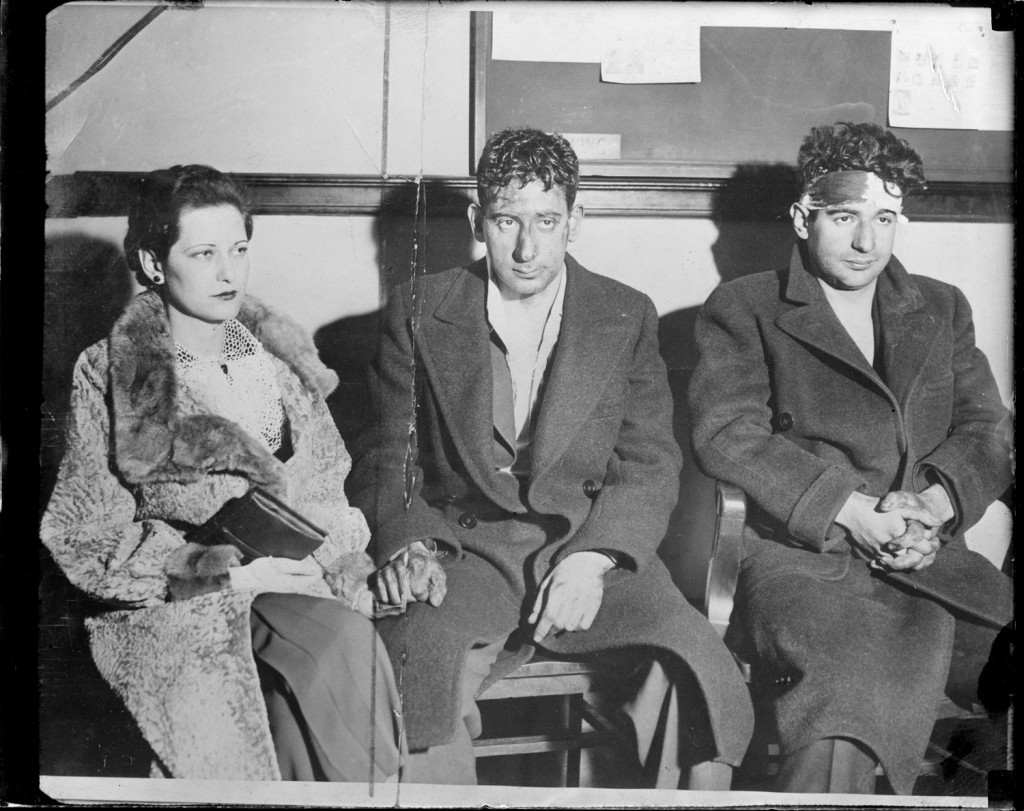The Millen-Faber Gang

In custody, Feb, 25 1934. Norma, Murt, and Irv. Abe was arrested in Boston that same day. Photo courtesy of the Boston Public Library, Leslie Jones Collection.
“Tommy Gun Winter” is the improbable but true story of four Bostonians who once shared the front pages with John Dillinger, Pretty Boy Floyd and Bonnie and Clyde. One was a beautiful minister’s daughter, another was a graduate of MIT, and their leader was Murt Millen – smart, persuasive and unbalanced.
The tale is told by a veteran journalist who tracks down his family’s unspoken history and rediscovers this saga of love, murder, psychiatry and the law.
A small-time hoodlum and aspiring race car driver of above-average intelligence, Millen was the son of a successful immigrant Jewish contractor. With his younger brother, Irv, joined later by a neighborhood buddy and aeronautical engineer, Abe Faber, Millen launched a criminal career of increasing scope and ambition. The brilliant Faber found in Millen the only person he ever loved. Norma Brighton was the 18-year-old who fled her divorced father’s home two weeks after meeting Millen in a beachfront dance hall.
Murt and Norma quickly married, and three weeks later the first person died. Then another. The Millen-Faber crime wave climaxed in Needham, Massachusetts on Feb. 2, 1934. At the height of the gangster era they robbed a bank and Murt Millen killed two police officers – Francis Haddock and Forbes McLeod – with a Thompson submachine gun he had stolen from the state police.
In an era before surveillance cameras, cell phones or computers the gang escaped clean away. There was little evidence at the scene, the eyewitnesses were unreliable, and the license plate number was fake. Police were stymied. But working the crime were a couple of clever detectives and two zealous newspaper reporters. What followed was a remarkable investigation and a record-setting trial where testimony from friends, family, physicians and seventeen psychiatrists unveiled an emotional triangle gone very bad.
In an American struggling with the Great Depression, this story of an interfaith marriage, sex, insanity and bloodshed made the three men and their “red-headed gun moll” infamous. Using newly discovered state police records, trial transcripts and meticulous research, Gorenstein’s account explores the Millen, Faber, and Brighton families and introduces cops, psychiatrists, newspaper men and women, and ordinary citizens caught up in the extraordinary Tommy Gun Winter of 1934.
